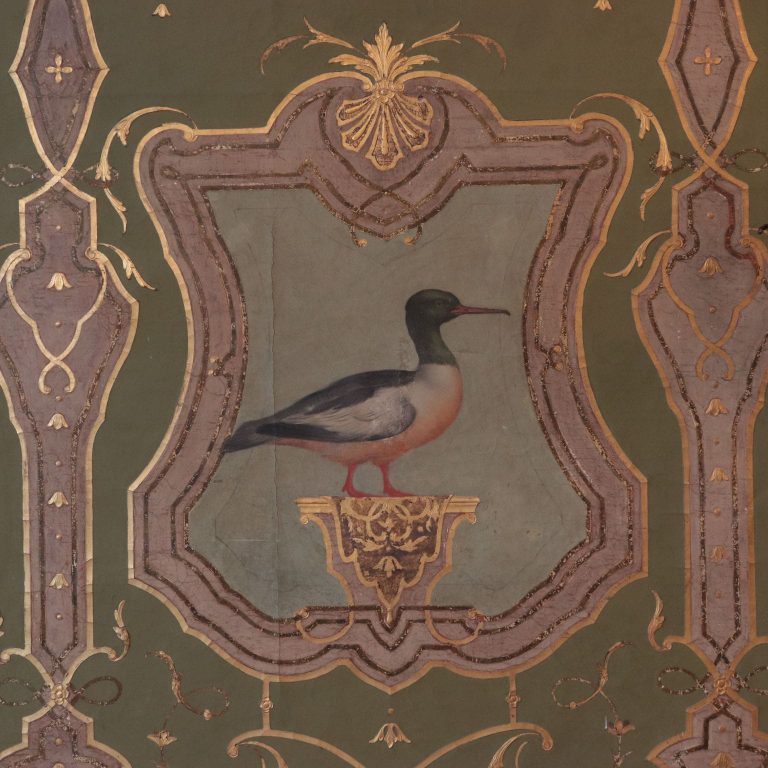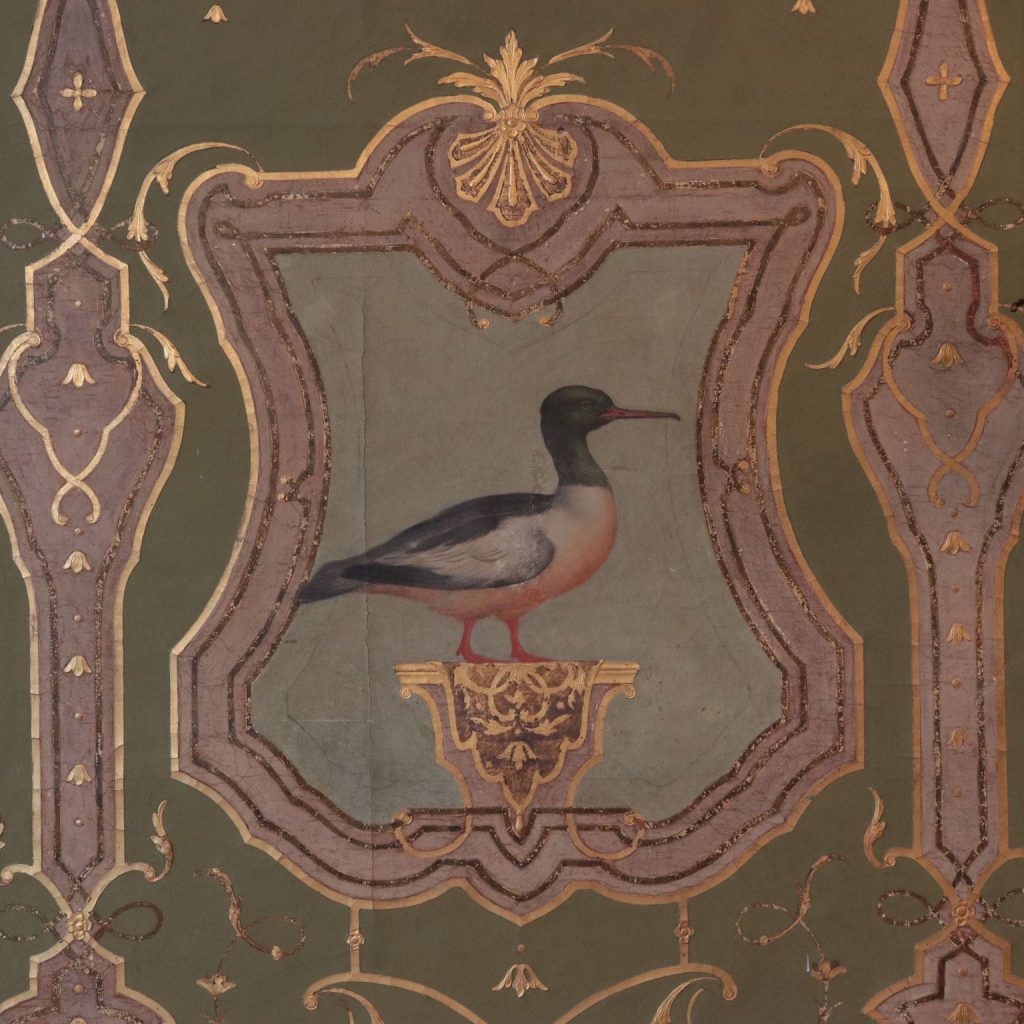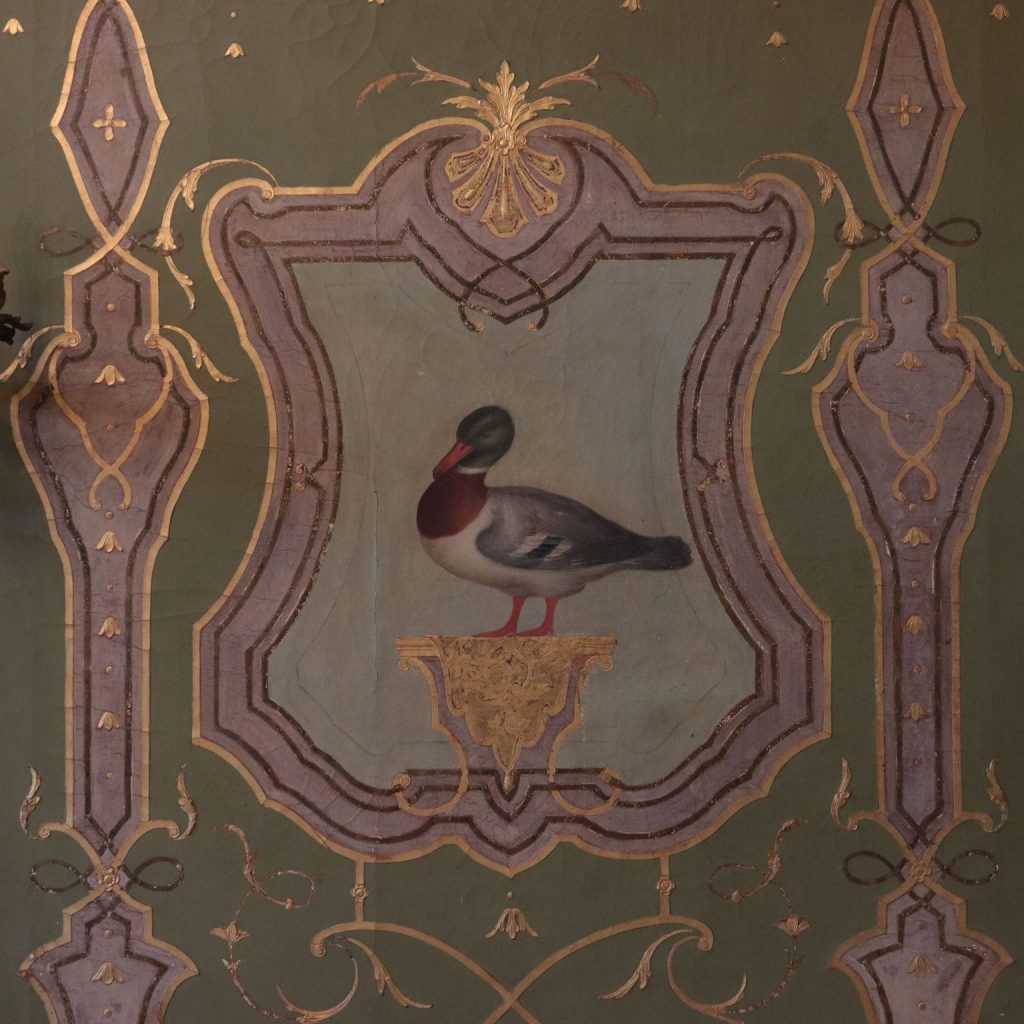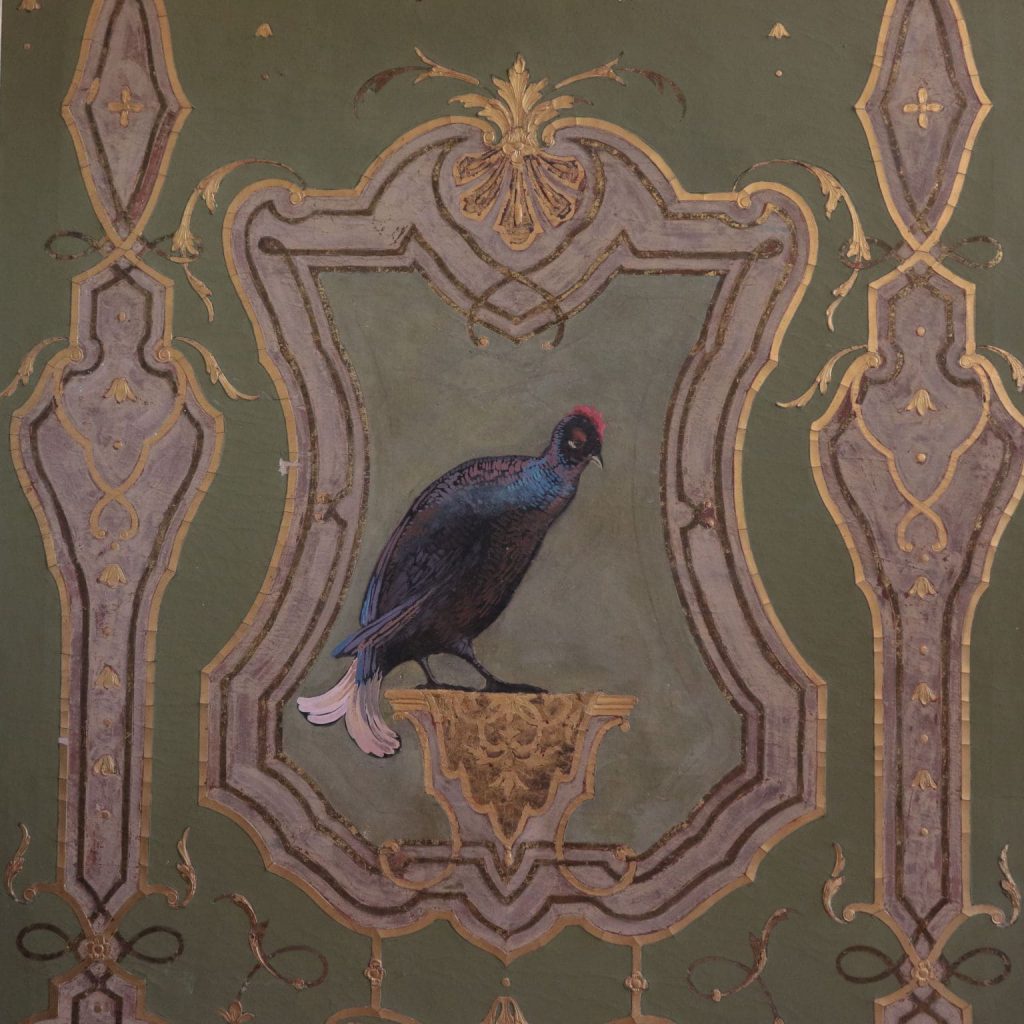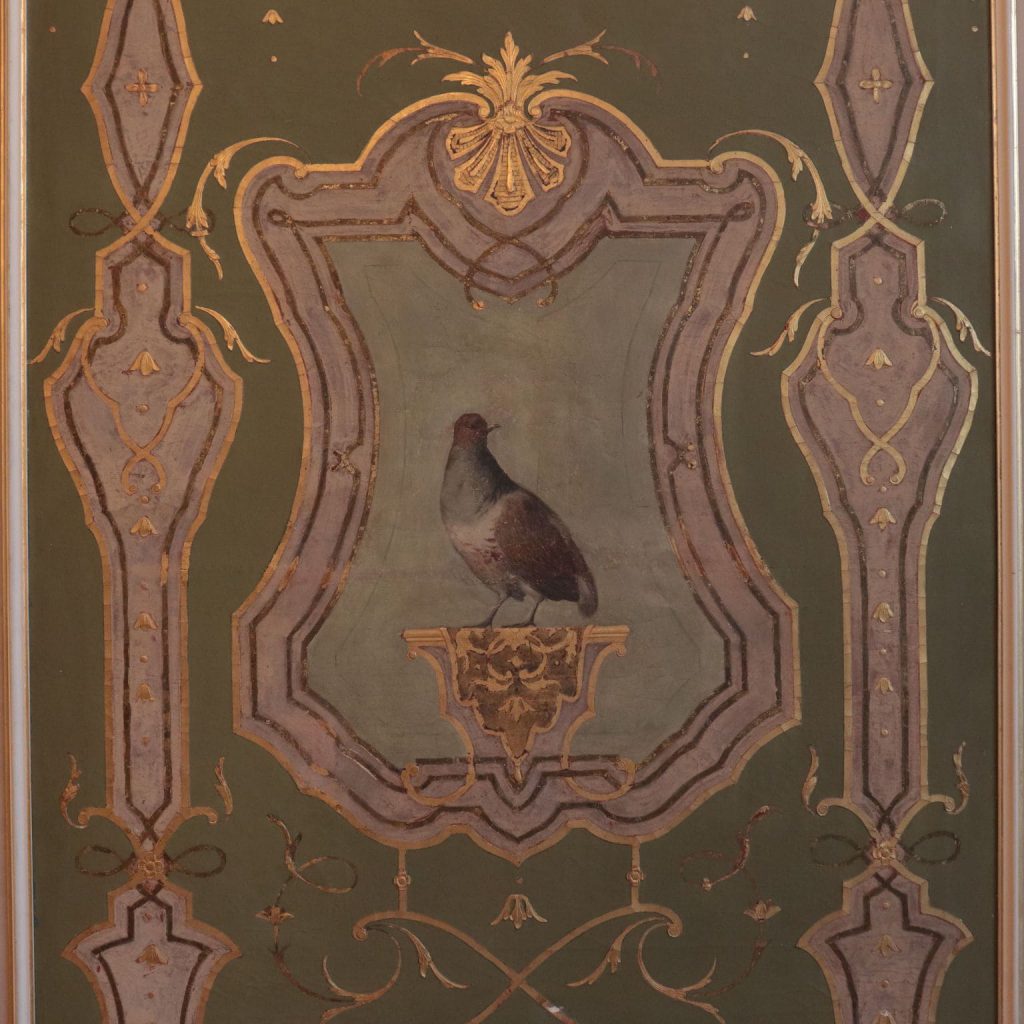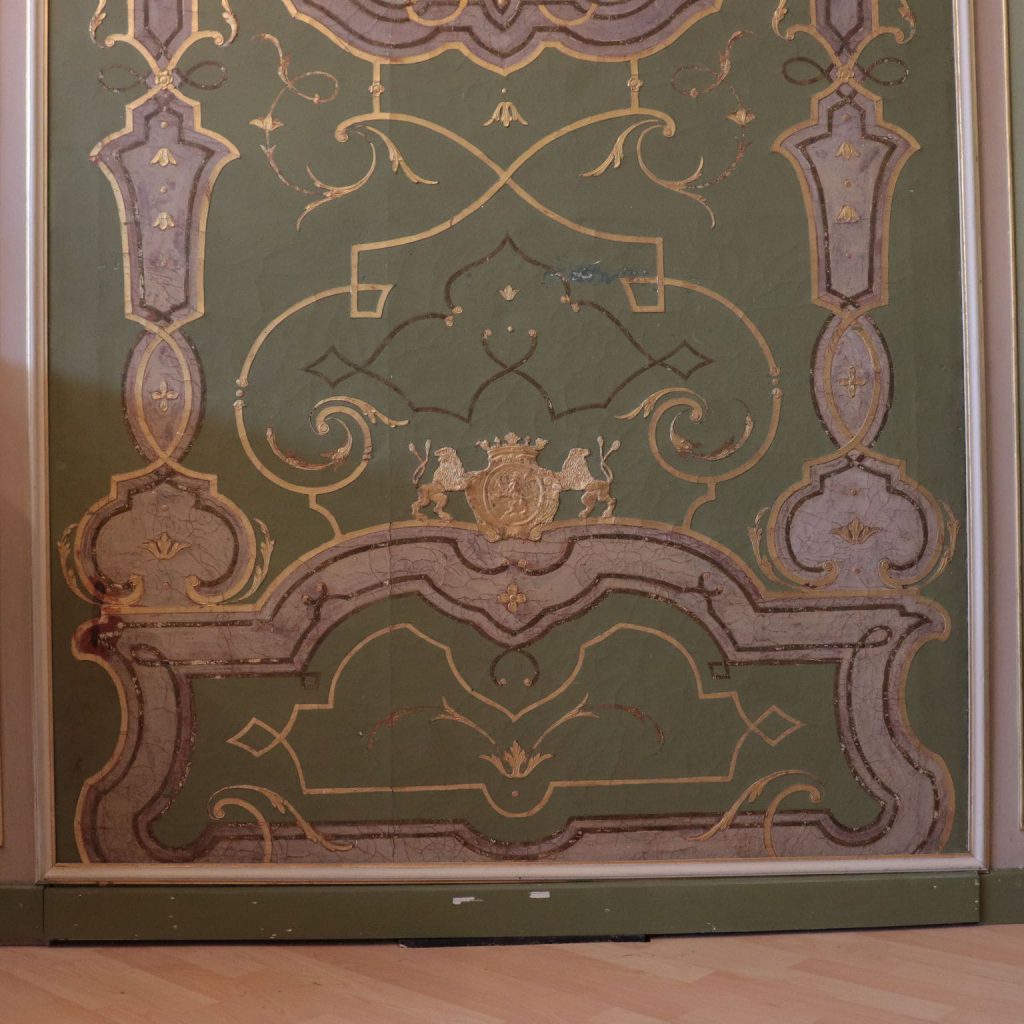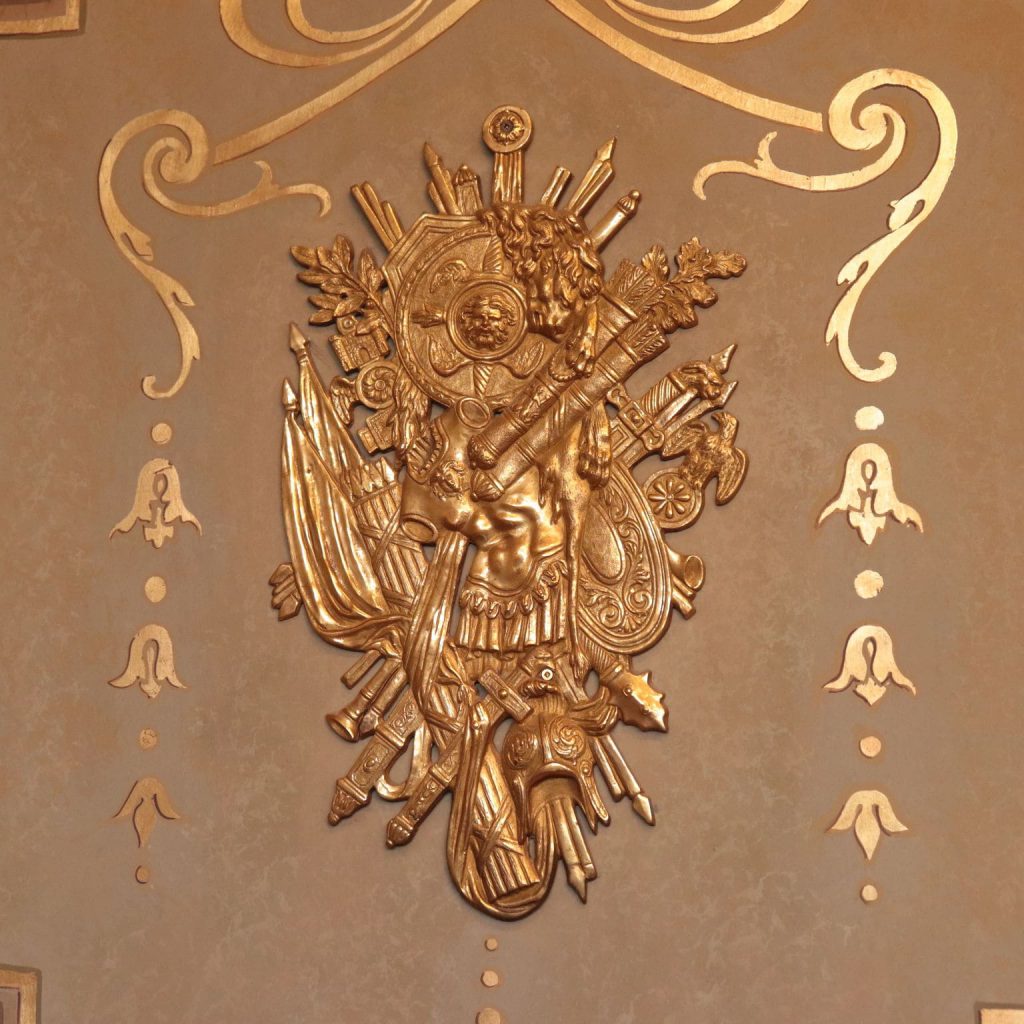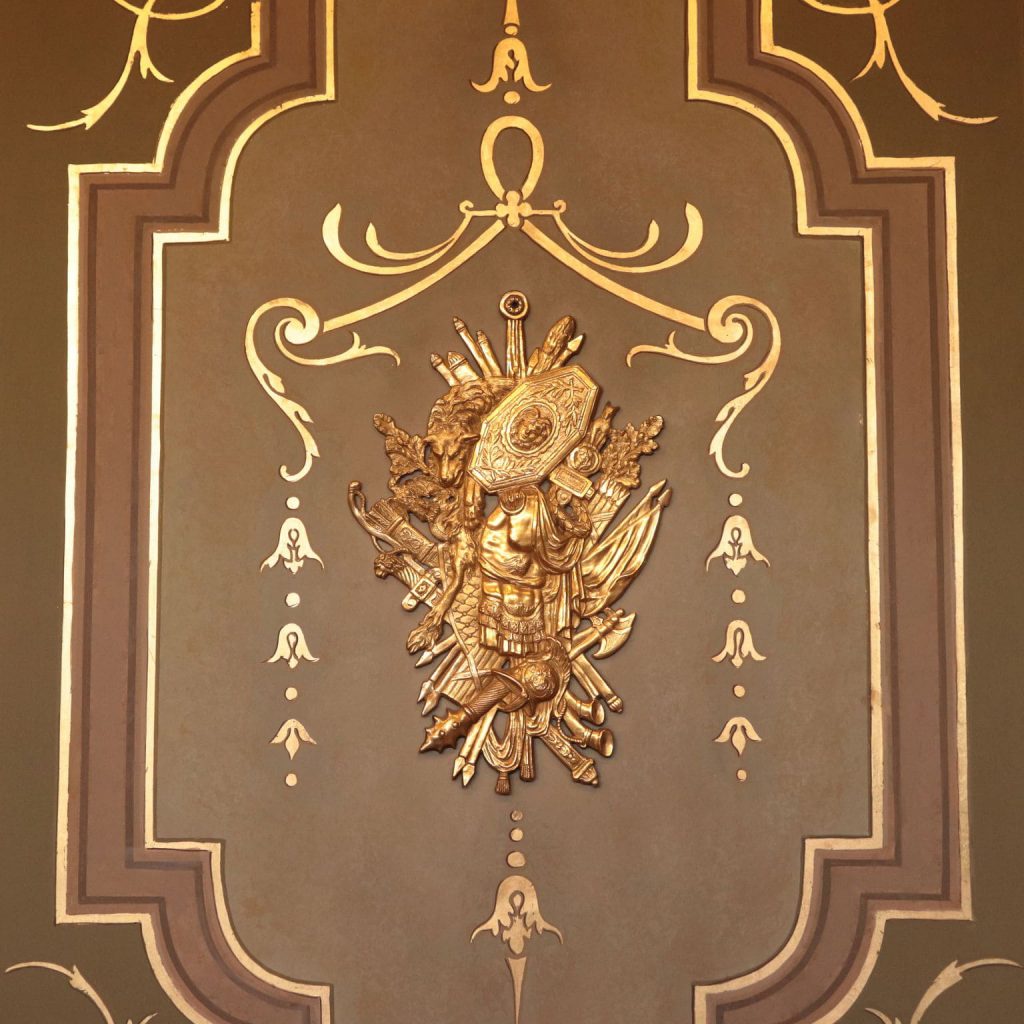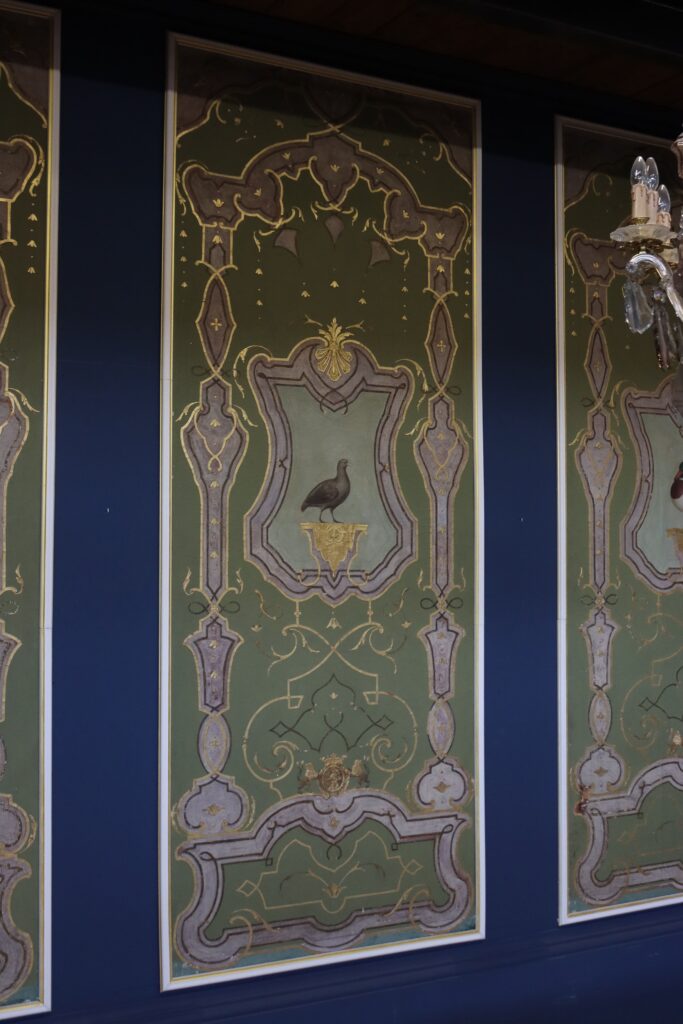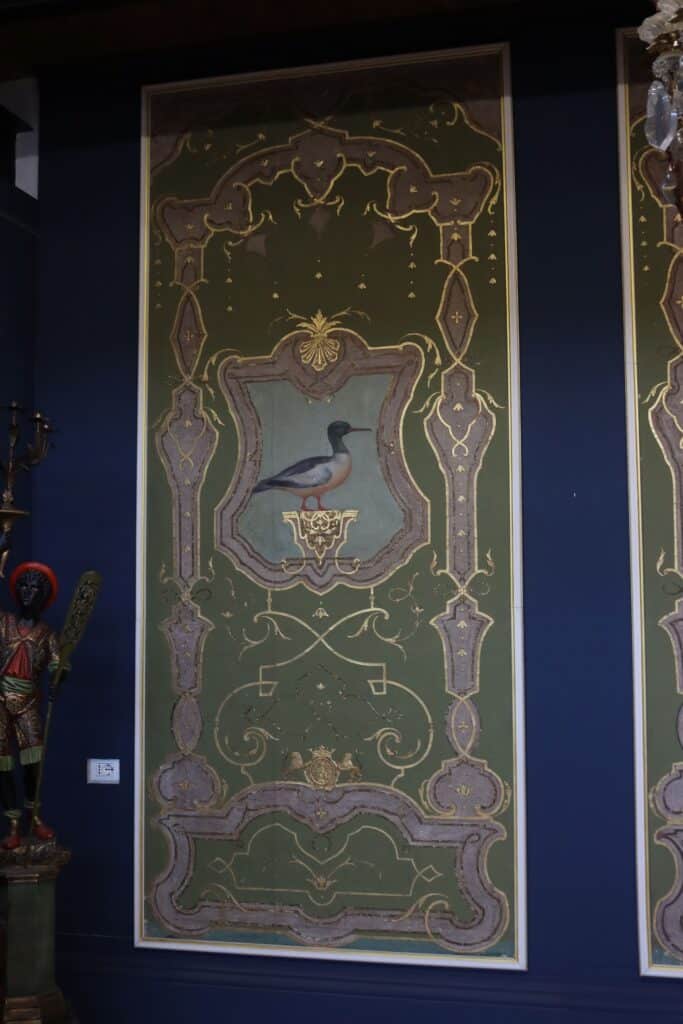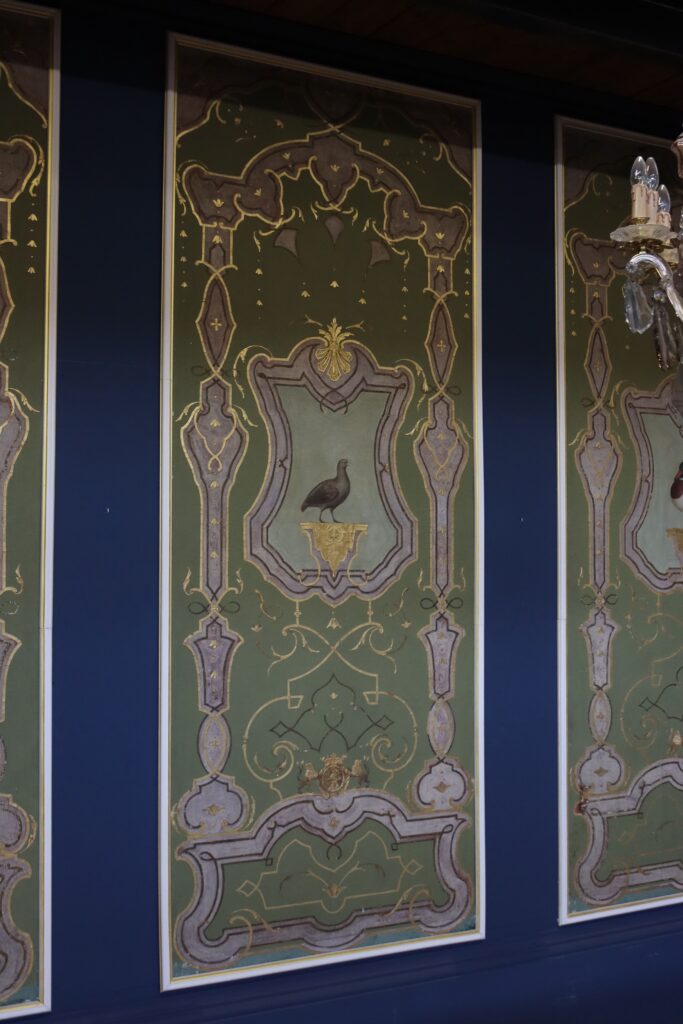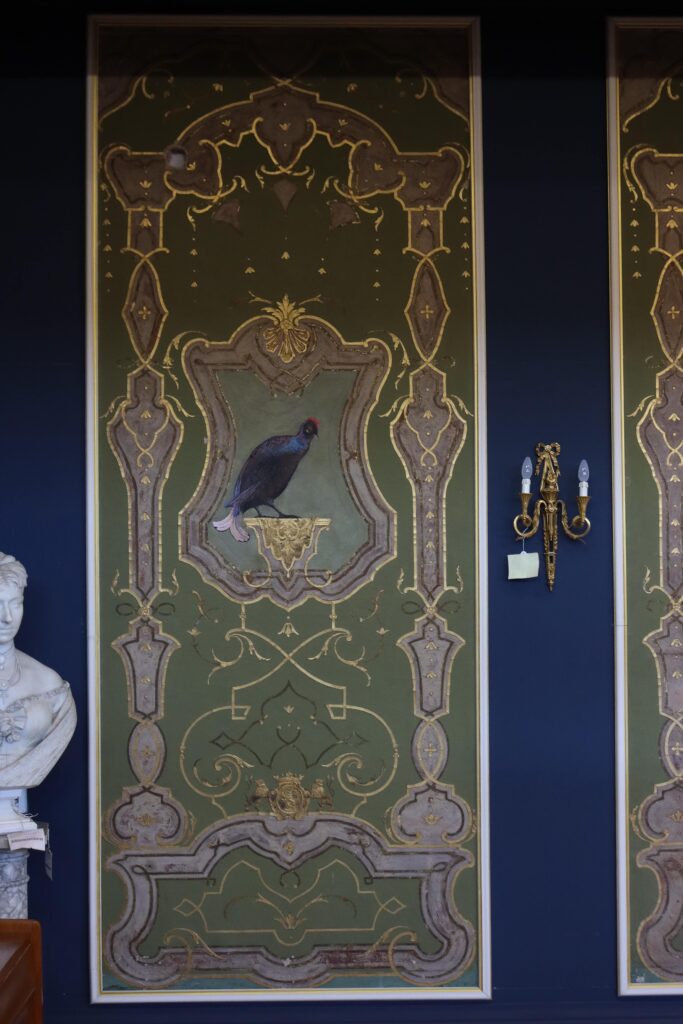Early 18th century
Description:
Boiserie made with six painted paper panels placed on canvas. The boiserie was made to measure for the modern apartment of the last property, inserting the six antique panels. The panels on a green background are decorated with Louis XIV-style rosy scrolls with lambrequins, characterized by intertwining golden and silver Berrain ribbons; the ribbons are made in relief with a stucco decoration that allows a engraving and a light carving of foliage and curls; the basic reserve, created to rest on a high plinth of a palace hall, is surmounted by the family crest held by two rampant lions, inside the coat of arms a rampant lion with a bifid tail holds a scimitar with its right paw .
The higher reserves contain paintings of polychrome game birds resting on a decorated shelf.
Historical-stylistic analysis:
The rich staterooms of the large palaces in ancient times were painted in frescoes but with the beginning of the seventeenth century, the spread of wall coverings also began. The coating had not only an aesthetic purpose, but also a functional one, it served to maintain a more constant temperature in poorly heated rooms, the first most obvious examples were the use of tapestries or wood paneling of fabrics, cloths and velvets. Completely wooden boiserie were also created, such as the Stube delle Alpi, or boiserie in which painted leathers were inserted and above all from the end of the seventeenth century. also boiserie designed to contain panels, in painted paper as in this case or mirrors. Cards such as frescoes made it possible to create themed rooms, more flexible and with lower costs than frescoes and stuccos. In this case we have a decoration probably dedicated to hunting, such as the room dedicated to the same subject in the Castle of Stupinigi.
The Etruscan or Chinese rooms are also very popular. For these rooms painted papers were even imported directly from the East and then inserted into the wall coverings.
An example in this regard is still present in Stupinigi, but also in Racconigi we can see a string of chinoiserie rooms covered with very high quality papers and themed furnishings.
It goes without saying that since it is a decorative material and capable of being replaced, it is well preserved only where it remained where it was, while it is mostly a few series of panels, sometimes poorly preserved, those that have reached the antique market.
The tempera panels described here come close to a French decorative taste and therefore finds more comparisons with the Piedmontese production. In fact, the decoration in the intertwining made of golden and silver ribbons recalls the compositions of Jean Bérain, whose engravings spread from the end of the seventeenth century. influencing the decorations of fabrics, wall stuccoes, carvings, inlays etc. of the entire Louis XIV period, we must say at least until around 1740. The panels described and that French influence are attributed to those years.
The fact that the famous actress Valentina Cortese has adapted them to her own bedroom in a twentieth-century apartment with three-meter ceilings should not, however, deceive us. The panels had been made without a shadow of a doubt for a much higher large hall, in fact the panels were inserted in a more complex boiserie that had to include a plinth and probably a top paneling, fitting into a wall of a height of at least 5-6 meters. The fact that they rested on a one meter high plinth is evidenced by the presence of the coats of arms which had to be not at knee height but at least for the observer’s gaze, the house being a detail to highlight. The upper closure then seems to leave room for a reserve move that could house a second box. The state of conservation is interesting, except for the blue covered with a green background tempera, the rest is perfectly preserved to the point that it can be assumed that the color change was an aesthetic choice not a restoration.
It must be said. To reinforce the observations made, that in Racconigi you can also see an example (in this case in fresco) of painting with similar birds in the west gallery, painted by the painters Cimati and Trifoglio.
Bibliography:
– Noemi Gabrielli, Racconigi, ed. Istituto bancario san Paolo di Torino 1971;
– Noemi Gabrielli, Museo dell’arredamento Stupinigi, ed. Tommaso Musolini 1966.
- Six tempera panels on paper

Antiques, Art and Design
FineArt is the new ambitious Di Mano in Mano project that offers an exclusive choice of antiques and design works, presenting them for their singularity and uniqueness.


